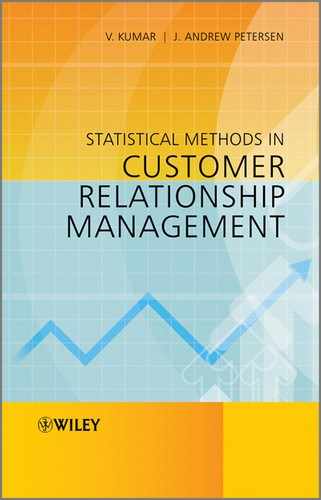1.2 What is CRM?
As the conceptualizations of CRM have evolved significantly, there are various definitions of CRM depending on the perspectives looked at. An important concept in CRM is customer value. Customer value is essentially the financial value of the customer relationship to the firm. It can be expressed in terms of contribution margin or net profit. Customer value is widely used by firms to evaluate their marketing efforts. However, it is a general term which does not refer to any specific time or duration. A better term that gives managers an idea of how the value of a client has evolved over time is customer lifetime value (CLV). CLV refers to the net economic value of a customer to a firm over his/her entire lifetime (three years in most cases – but it can depend on the length of the average purchase cycle of customers) with the company [2].
By definition, CRM refers to the practice of collecting, storing, and analyzing customer-level information, and incorporating the results into the decision-making process of a firm [3]. This also involves automating, enhancing, and integrating core business processes such as production, operations, sales, marketing, and finance, among others. The power of CRM lies in its adaptability to further the performance of any individual activity of the business, or even the entire business as a whole.
Companies are now beginning to design and implement CRM initiatives from a CLV perspective so that it becomes easier for them to measure the impact of CRM activities. Apart from evaluating the value of customers, such an approach to CRM activities also provides a basis for the competitive advantage of a firm: the customer-centric organization. By improving customer satisfaction, and customer loyalty, CRM helps firms acquire and retain profitable customers, and reactivate dormant customers. The ultimate goal of CRM is to maximize the lifetime value of each individual customer to the firm, thereby increasing firm profitability. In this regard, most of the CRM initiatives can be attributed to one of the following four categories:
Now that we have reviewed the reason for adopting CRM practices, in the next section we will discuss the essential inputs needed for any CRM implementation.
